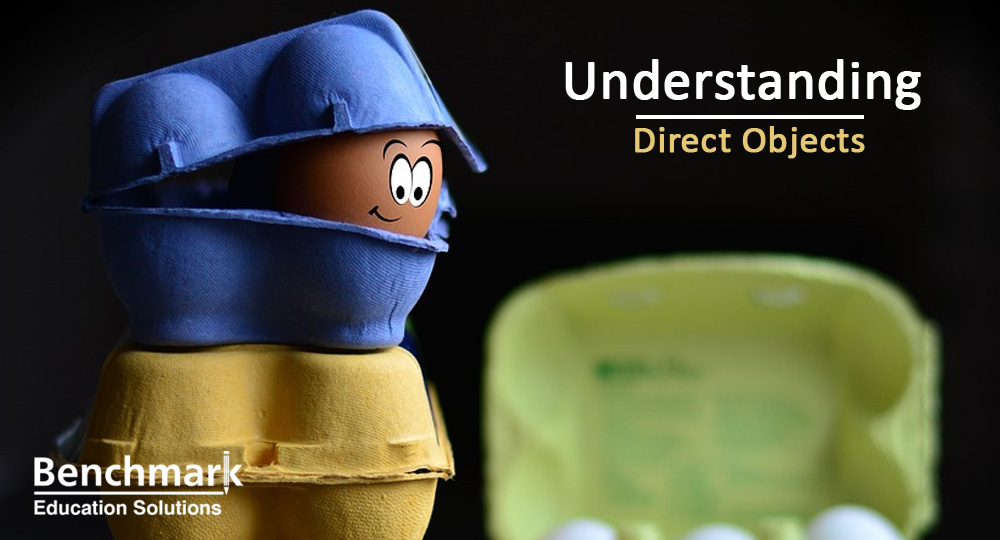Direct Objects so important in TOEFL Writing?


In order to speak English properly, you need to know the basics of grammar. That means understanding the parts of speech that make up a sentence and knowing how they work together to create and impart meaning. Doing this is essential for performing well in TOEFL.
While a sentence could be as simple as a subject and verb, there is usually much more than that. For one thing, a sentence will often include an object. In today’s article, we are going to look at direct objects and what they do.
What is a Direct Object?
In a sentence, an object essentially receives the action that is performed by the subject. Look at the sentence, taken from a sample TOEFL essay:
- The government banned plastic straws.
In this sentence, we can locate and identify three distinct parts:
- Subject: the government
- Verb: ban (banned)
- Object: plastic straws
The subject is the one who is doing the action and the action is the verb. In this case, the government is doing something (banning). Therefore, the object is the recipient of that action. In other words, “What is being banned? Plastic straws.”
Let’s take a look at another example sentence from the same TOEFL essay. See if you can identify the subject, verb, and object:
- Plastic straws can kill sea turtles.
Did you get it?
Let’s check those answers:
- Subject: plastic straws
- Verb: can kill
- Object: sea turtles
Notice that this time the verb was two words. That is because “can” is a modal verb that slightly alters the meaning of the verb, but we still consider it to be part of the verb phrase. There are other examples of this, such as the continuous tenses, which include some form of “to be.” These are all just part of the verb.
In the previous two examples, the object has been a direct object. That means that it is directly affected by the verb. The link between these parts of the sentence should be clear and obvious, hence the name “direct.” There are also indirect objects, which we will look at in another lesson.
Direct Objects and Transitive Verbs
In order to fully understand how direct objects work, and therefore give you the best chance of doing well at TOEFL, it is important to also look at the verb. We must ask whether or not a verb can take an object or whether indeed it needs to take an object.
In English, we can divide verbs into two categories: transitive and intransitive. A transitive verb requires an object, while an intransitive verb doesn’t.
Take for example the word “die.” This verb is intransitive, meaning that it cannot take a direct object. Let’s look at another example from the previously mentioned TOEFL essay:
- When they inhale the plastic straws, sea turtles will die.
In this sentence, there are two clauses. The first clause goes: SUBJECT + VERB + OBJECT, while the second goes SUBJECT + VERB. This is because the verb of the first clause is transitive, while the verb of the second is intransitive.
When we use an intransitive word like “die,” it cannot be followed by a direct object, whereas when we use a transitive verb like “inhale,” we must follow it with a direct object. However, it is worth noting here that some verbs are both transitive and intransitive. In fact, “inhale” is one such example. I can equally say:
- If you don’t inhale oxygen, you will die.
- If you don’t inhale, you will die.
The verb “inhale” can function with or without a direct object, but “die” cannot take an object. There is no grammatically correct way of connecting it to one.
How to Prepare for TOEFL
Armed with the knowledge above, you can now continue your TOEFL preparation. You should remember the important facts that direct objects receive the action that a subject is doing, but that not all verbs can be followed by a direct object.
Once you know this, you can focus your learning more carefully so that you learn these important words in a way that will prevent you from making mistakes with them. It is worth noting when you learn a new verb, for example, whether it is transitive, intransitive, or both. This will greatly improve your chances of dazzling the TOEFL examiners with your grammar skills.
If you are experiencing trouble with this area of grammar, you should have your writing checked by a professional. Try our TOEFL writing correction service today.

